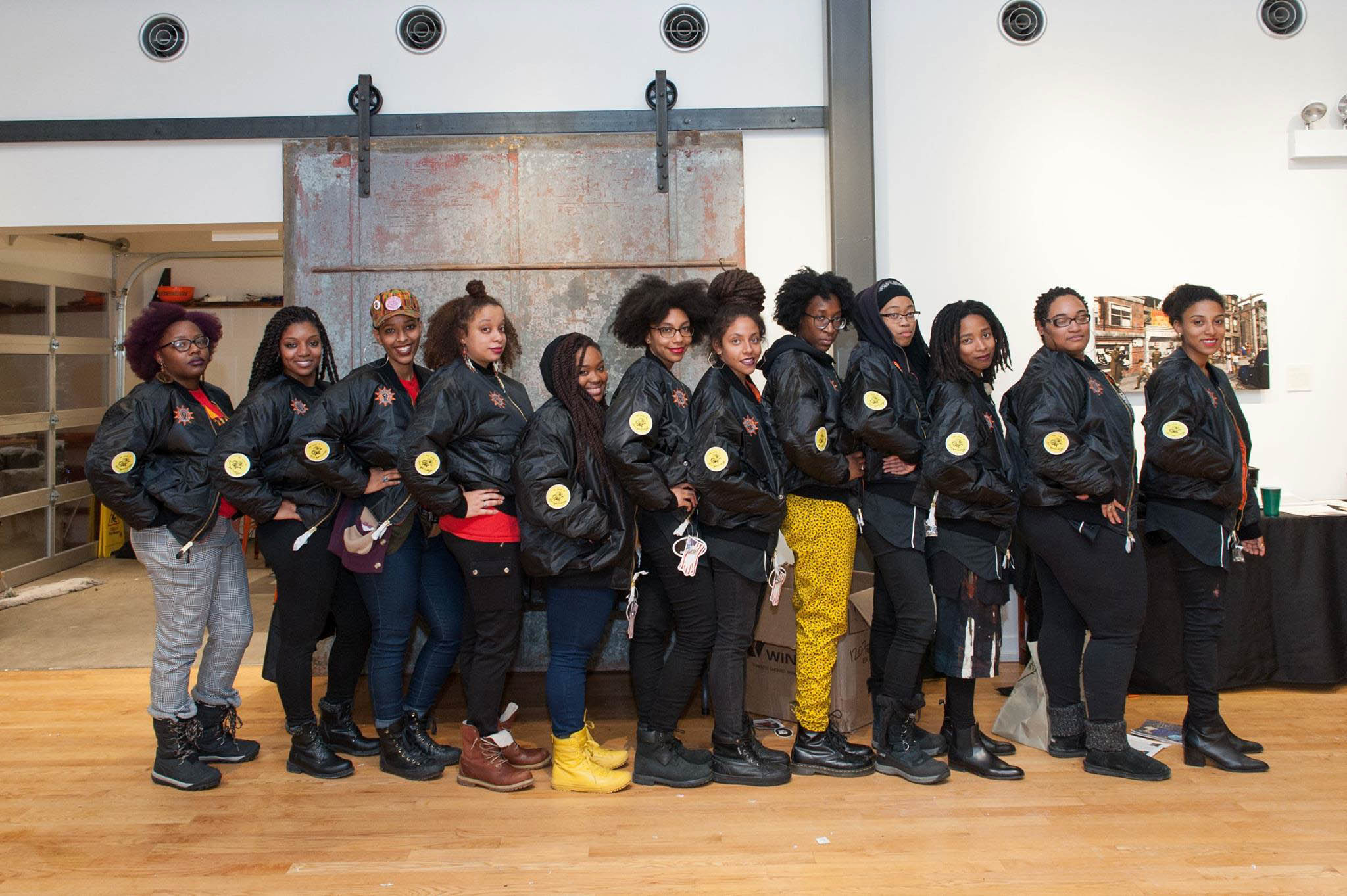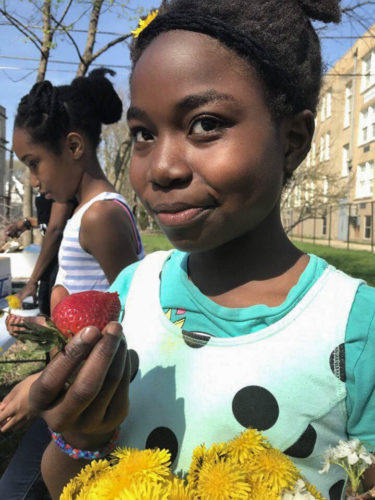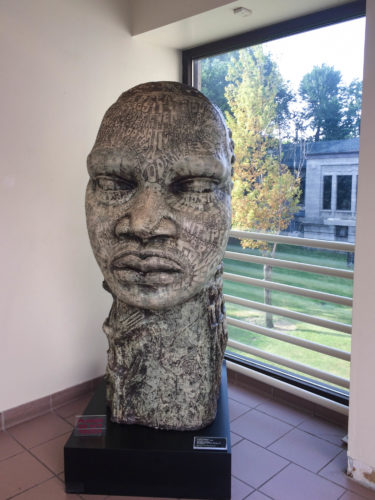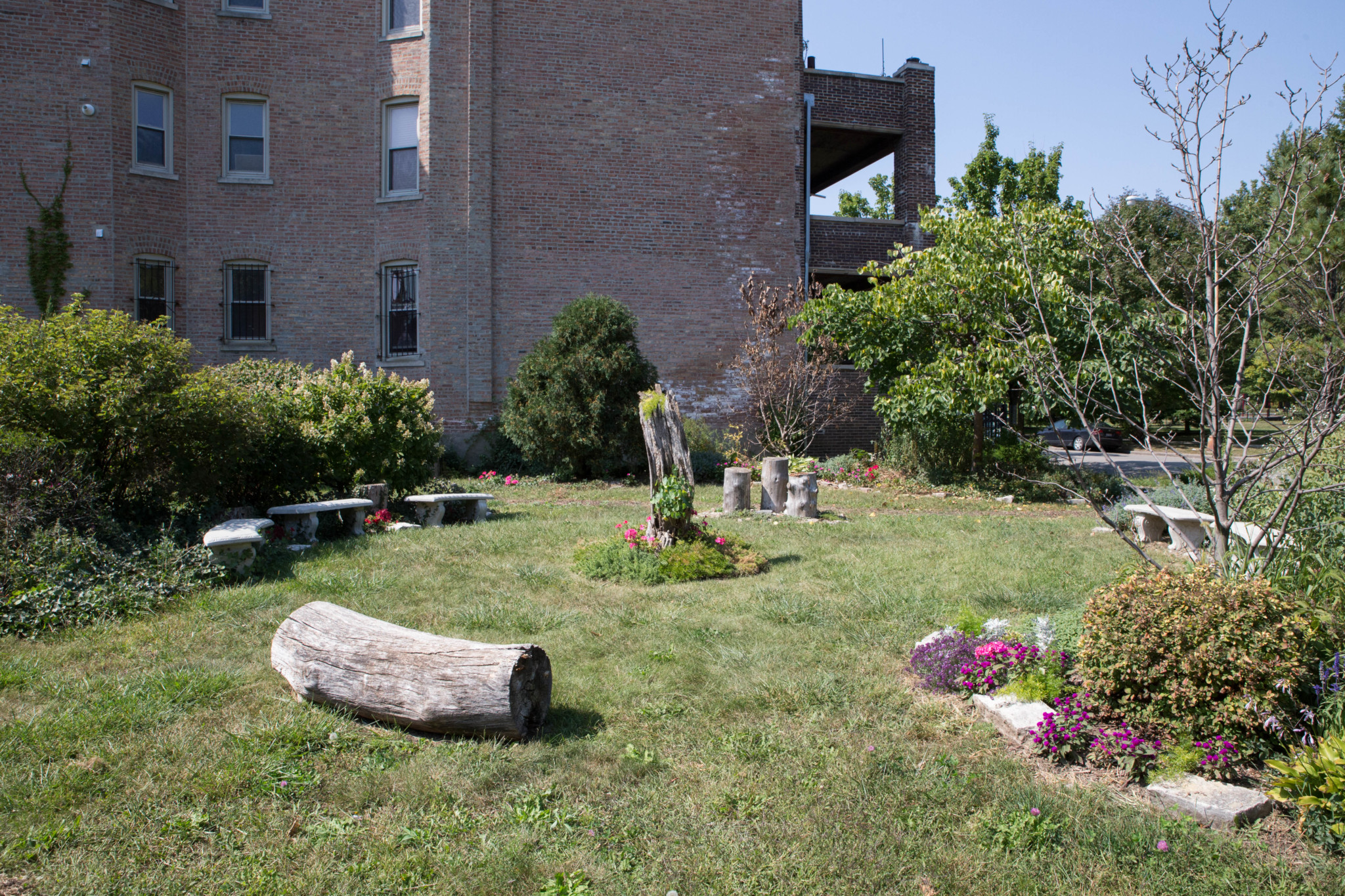- Best Radical Youth Group
- Best Cultural Stronghold
- Best Memory of a Transcontinental Art Experience
- Best Greenprint for the City
When I first moved into the Woodlawn community about seven years ago, I was pretty active in gardening, especially. You can’t help but notice just lots of vacant land in the neighborhood. And I have a love for gardening that comes from my childhood, but also one of the things that is quite natural to me to think about is how to be active in the community. But in Woodlawn, there’s not a resource like the Hyde Park Herald. Although there’s lots of conversation and lots of debate happening, more often in living rooms, and private spaces rather than public—institutions aren’t there, and the space literally isn’t there. But what there is a lot of is vacant land. And so when I moved there, my engagement went in a very different direction.
[In Woodlawn] I started thinking about other assets that were underappreciated and underdeveloped. And it led me to an effort with some of my neighbors to try to establish a community center in a vacant, boarded-up education property that was later sold to a fraternity with ties to the 5th Ward alderman. But in the process, we were able to have a lot of conversations. There were a group of us—four families altogether—who were involved. And so we came up with an idea of what we thought would benefit the community, but then we went out and knocked on doors and talked to people about what they thought would benefit the community. Out of that came something called Woodlawn Voices and Visions, which is a youth videography program at its core, and that’s a program that I run to this day. We filmed at various locations in Woodlawn … and currently just opened at Parkway Gardens.
I went from seeing this beautiful asset in Woodlawn, which is all this green space that’s not used, to thinking more broadly in terms of assets, and recognizing that there wasn’t a lot of opportunity for engagement in the way that there seemed to be in Hyde Park. So there seemed to be a need for a space to come together. When that didn’t work out, we still pursued this idea of virtual space; videography work that would aid in the production of mini-documentaries that young people put together around relevant social topics. We connect them with experts in the field—we would create a public sphere that did not naturally exist any longer in the neighborhood. And so that’s been an ongoing interest of mine in Woodlawn; this idea that there’s tremendous richness and capacity, but there’s also these barriers to realization of the benefits of that richness. Although more development would be nice, there’s an asset already there—it’s already a rich and interesting community.
For example, there was a huge fire in Woodlawn almost two years ago at the Shrine of Christ the King, and the archdiocese was going to demolish the church. So I, with a woman that was in their congregation, led an effort together and fortunately they were able to save the church—there’s a restoration project going on now. My favorite thing about Woodlawn is that whole block. The Shrine of the Christ the King is a breathtaking piece of architecture and it includes a shelter for women with substance abuse problems with an amazing history. It was founded by two nuns, one of whom is still around, and I serve on the board of that shelter and rehab. And next to that is the 65th and Woodlawn community garden, which is large and wonderful and has a great community base at the center of it. And on that same block there’s First Presbyterian Church, which is a great church with an amazing history and one of the few community spaces that we have in that part of the neighborhood when you want to have a community meeting.
I love doing the videography work that we do because it’s an excuse to be nosy about people’s lives. So we’ll do oral histories and just sit down with somebody who has lived in the neighborhood for sixty or seventy years, and we just ask them to tell us their story.
A further development of mine is an organization, or at least affiliation with people, I started called South Side United, which is based on the premise that people do not have enough of a say in development. And I believe, especially, we’re at a disadvantage right now because the principal wards where a lot of this stuff is happening (in terms of the Obama Center and Jackson Park) are outside of the community. Certainly the 20th Ward and the 5th Ward are huge parts of it, but the 20th Ward alderman is missing in action, and meanwhile we’re at sort of a weird situation with the 5th Ward alderman—there just seems like there’s not a lot of leadership. In any case, these aldermen are not as present as they probably should be, and we, as a result, do not have a voice. It’s just exacerbating a problem that we already have, which is that the community does not have much of any say in the formal negotiations concerning Jackson Park and elsewhere.
So in my view the solution to deal with the development challenges we have in our community is not to send everybody packing, but to have local control. I imagine councils in every neighborhood that actually vote on development, that actually have the authority to approve or reject developments as they come to you, and you could look at them in as much detail as you wanted. Every neighborhood council would have to be popularly elected—it can’t be appointed…. People would come in across different class and geographical and ethnic backgrounds. That’s what I’ve been pushing for. And it’s because I think we are not recognized as an important part of the decision-making process. But we understand the neighborhoods and the parks and the community assets better than anyone because we live here and we’re here everyday.
I have concerns and criticisms about particular developments—I think the Obama Center garage development seems problematic, and I have huge problems with the golf course—but it can be a distraction to get too focused on the particulars. The broader issue is whether or not there’s community control happening in each of these developments in the South Lakefront as a community more broadly. That’s what I’m concerned about. I think we need a long-term solution.
But we can’t ad hoc address our broader problem, which is that we don’t have influence over development in our communities. And the truth is that the challenges that we face have to do with control of land. If we don’t control the land as the local people living here, then we get run over.
If we have a system of asserting ourselves into any sort of development in any geographical location as well as these Community Benefits Agreements, I’d feel more comfortable. Because you never know what’s going to happen next, and it takes a lot of time and energy to build that up—it took two years for the Community Benefits Agreement for the Obama Center to get where they are now, but they still don’t have a physical draft of their agreement, and they haven’t been engaged by the Obama Center or the Obama Foundation, and it’s a shame that they’re not. The whole situation would be different if we already had the power.
The city, in my opinion, doesn’t do large-scale development well. Huge parts of neighborhoods are torn up, people are displaced; there are all sorts of negative effects. But the majority of people don’t say that because there’s a sense of pride in “we’re the city that gets things done” and “we’re builders…” So when they started organizing a development corporation for three neighborhoods [the Woodlawn, Washington Park and South Shore Community and Economic Development Organization, headed by former Secretary of Education Arne Duncan and marketing agency CEO Sherman Wright], which is kind of unprecedented, they’ve basically said they’re going to take over the South Lakefront and decide which developments pass in these neighborhoods. To me it’s a warning signal of trouble on the horizon.
So [in Woodlawn] there are definitely problems, but there’s also a lot more commitment and intentionality to the community than people realize. I think people think we all ended up accidentally in Woodlawn. But there’s a reason we decided to stay, because we value what’s available here. I love walking through the neighborhood and the wondrously diverse architecture, with people that are from PhD-holders to having never finished elementary school living together, and we all find a way to get along.
Gabriel Piemonte is a freelance writing coach and the director of The Woodlawn Voices and Visions Project, an oral history initiative connecting high school videographers with elderly interview subjects from the community. In 2010, he relocated to Woodlawn from Hyde Park, where he was the editor of the Hyde Park Herald for nine years. Always an activist, Piemonte had fellow organizers in Woodlawn who spoke highly of the neighborhood when he was looking to move to a larger and more affordable space. He soon found his niche in “the little gem” he calls the 65th Street block between Blackstone and Stony Island, and has focused his energy of late on increasing community conversation over the Obama Presidential Center, set to open in adjacent Jackson Park in 2021.
Assata’s Daughters

In Washington Park, youth-oriented community group Assata’s Daughters is cultivating leaders and activists among the young folks of Washington Park—and a plot of land. Founded in March 2015 to make radical political education and activism around abolition accessible to young woman-identifying Black people in Chicago, Assata’s Daughters pays honor in name and in teachings to revolutionary icon Assata Shakur, a Black nationalist and activist who has lived in Cuba under political asylum for the last three decades.
“We’re specifically focusing on making a community organizing model here in Washington Park,” founder Page May said. “We’re trying to build out a youth base, and to learn about what issues they care about and what they think the solutions are…and to make those connections between those larger movements and what’s happening on the block.”

Despite being a relatively new group, Assata’s Daughters has already developed robust programming for its youth: Akerele (which means “one who is strong in spite of being small” in Yoruba) teaches young girls, ages four through twelve, about the history and significance of youth in community organizing. Another of their programs, Ominira, is a year-long political education program for female teens, and teens who are trans, femme-identified, and gender nonconforming. In efforts to expand their co-educational offerings, they will have a parallel program for boys up and running this fall.
Their first co-ed program, the Black Earth Youth Farm, came to full fruition this summer. On 55th Place and King Drive, teens planted, tended, and harvested everything from peppers and okra to corn and broccoli over the course of the summer, for a small stipend (and as a lesson in food justice and “self-sustainment as a tool of resistance”). They gave the produce away to neighbors and in the fall will provide a series of free hot meals using some of their later-harvested produce.
“At the start very few people would talk to us, but … people by the end of the summer were walking by or driving by and yelling ‘thank you,’” May says. “I think it’s really important that these young people got to see that they were respected and that what they were doing was valued.” (Emeline Posner)
For more information, or to donate to the group, visit assatasdaughters.org or email assatasdaughters@gmail.com.
DuSable Museum of African American History

Anytime is a great time to visit the DuSable, but the past year has been a particularly memorable one for the city’s premier and proudly independent African American history museum. The inimitable Chance the Rapper joined the museum’s board of trustees in 2017 (as did his father), and in a spontaneous moment at its “Night of 100 Stars” gala donated his Grammy for Best Rap Album to the DuSable. Meanwhile, the DuSable’s long-term Roundhouse wing restoration project, meant to both preserve the original architectural work of Daniel Burnham (the famed urban planner and 1893 World’s Fair impresario) and upgrade the space into a new exhibition venue, is open temporarily this fall to host Palais de Tokyo’s installation “Singing Stones” as the launch event for EXPO CHICAGO 2017 and the Chicago Architecture Biennial. The Biennial partnership will continue with an exhibition of South Side architecture photography curated by architecture critic and photographer Lee Bey—who was also just named the DuSable’s first-ever vice president of planning, education, and museum experience in July. Though it welcomes these opportunities for growth, DuSable remains a South Side institution respected for its consistent commitment to Black history and traditions. The recently Smithsonian–affiliated museum also devoted the year to an honoring of its late founder, Dr. Margaret Burroughs. The Margaret Burroughs Centennial Film Series, a partnership with South Side Projections, ends in November with a screening of The Edge of Each Other’s Battles: The Vision of Audre Lorde. The annual free Arts and Crafts Festival (this year themed around Burroughs), Jazz Series, and a wide variety of performances and speakers mark its time-tested and continuing impact on Washington Park and Chicago at large. (Sara Cohen)
DuSable Museum, 740 E. 56th Pl. Tuesday–Saturday, 10am–5pm; Sunday, noon–5pm. (773) 947-0600. $10 regular admission; $8 Chicago residents; discounts available for students, seniors, and children; Tuesdays free. dusablemuseum.org
Best Memory of a Transcontinental Art Experience
Africa International House’s Annual African Festival of the Arts Poster
Born as a nonprofit overseeing the ever-growing African Festival of the Arts—a favored South Side summer tradition since 1989—the Africa International House has since become a year-round contributor of cultural artwork and learning. Yoruba language classes, a Pan-African soccer tournament, and the annual pre-Kwanzaa Festival mark a few of its other program offerings.
The organization began in Hyde Park, but relocated its headquarters to Woodlawn eight years ago, and has hosted its festival in Washington Park for the past fifteen years.
Each year, the AIH selects an individual African American or African artist to design the poster for the African Festival of the Arts. In 2017, the poster paid tribute by showcasing the colorful work of the deceased Nii Oti, a South Side native and frequent poster contributor whose studies throughout Ghana, the Ivory Coast, and Nigeria greatly influenced his style. Past festivals’ poster artists include Samuel Akainyah, Woodrow Nash, Frank Frazier, and Kerry James Marshall.
Each year’s AFA poster reflects a snippet of the diverse style and masterful artistry of the hundreds of African and African American creative works that the festival showcases.
Past AFA posters, which make an excellent wall decoration, gift, or keepsake, may be purchased online—so if you forgot to mark your calendar for the festival this year, or the twenty-seven before that, AIH has your back. (Sara Cohen)
Africa International House, 6200 S. Drexel Ave. Monday–Friday, noon–6pm; Saturday, noon–4pm. (773) 955-2787. Posters available at squareup.com/store/africa-international-house. aihusa.org
West Woodlawn Botanic Garden and Village Farm
“A city of villages” is how Naomi Davis describes the final goal of the West Woodlawn Botanic Garden and Village Farm. The organization, which is headed by Davis, began in 2010 as part of a citywide effort to consider and fund environmentally friendly land use. But it’s since grown into much more than a municipal project. It’s hard not to nod along eagerly as Davis sketches out her utopian ambitions: backyard gardens generously scattered throughout the neighborhood, resident-owned affordable housing, an ecologically oriented revitalization of the area’s six commercial corridors. “We want it to be a teaching place, growing place, experimenting place, beautiful place, family place, a one-of-a-kind jewel,” she says.
But if this makes WWBGVF’s vision for Chicago seem almost as untenable as its lengthy initialism, perhaps it’s worth listening to Davis describe the many plans already in motion. The organization has planted more than 150 trees in West Woodlawn, and is working with the Morton Arboretum to turn the area into the country’s first African American Community Arboretum. Also in development: fifteen community gardens that will double as memorials to the Great Migration. The first, at 60th and St. Lawrence, is complete save for a statue that will commemorate, says Davis, “the story of the comers and strivers in Chicago.” And routinely, the organization will host nature walks and architecture tours, aimed at educating others about the neighborhood’s rich cultural history and its possible future. (In addition, there are already several other community gardens in Woodlawn whose plot availability and volunteer opportunities are tracked yearly by another nonprofit, Garden Resources of Woodlawn—signaling a robust appetite in the neighborhood for what WWBGVF will bring.)
Davis notes that the “eco” prefix she often uses to describe the organization’s work stands for both “ecological” and “economic.” “There are so many examples of how development comes to black, blighted places and it becomes a white world,” she says. “We’re agitating for solutions to avoid displacement.” And this stability is what the dream of a city of villages ultimately encompasses: in a world where global calamities—climate change, financial crises—leave us feeling helpless, the West Woodlawn Botanic Garden and Village Farm suggests that self-determination can come through a return to the local, and a focus on the people and places that are down the block or around the corner. (Christian Belanger)
West Woodlawn Botanic Garden and Village Farm, 60th St. and St. Lawrence Ave. (773) 678-9541. blacksingreen.org
Support community journalism by donating to South Side Weekly

